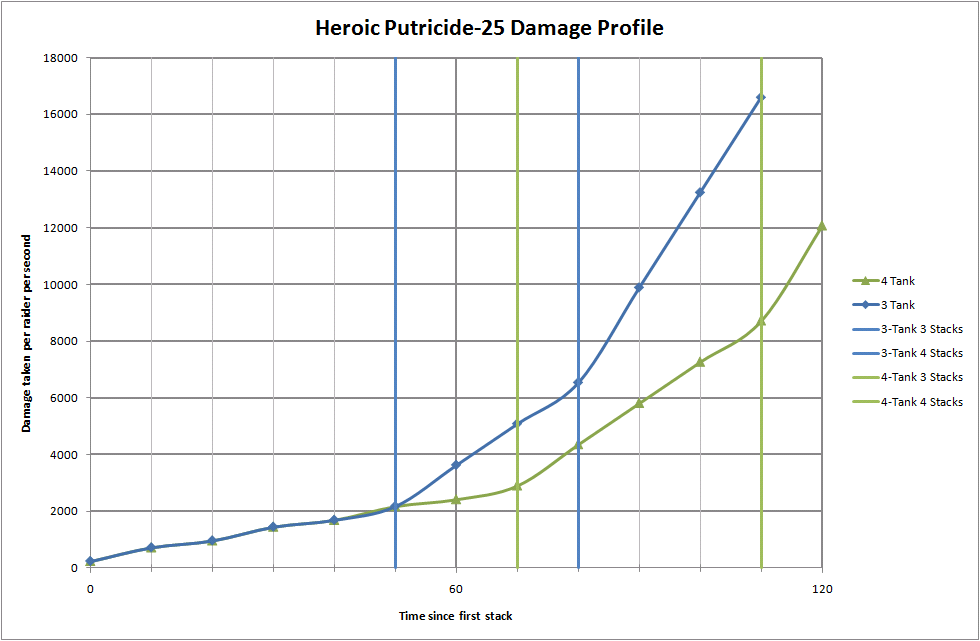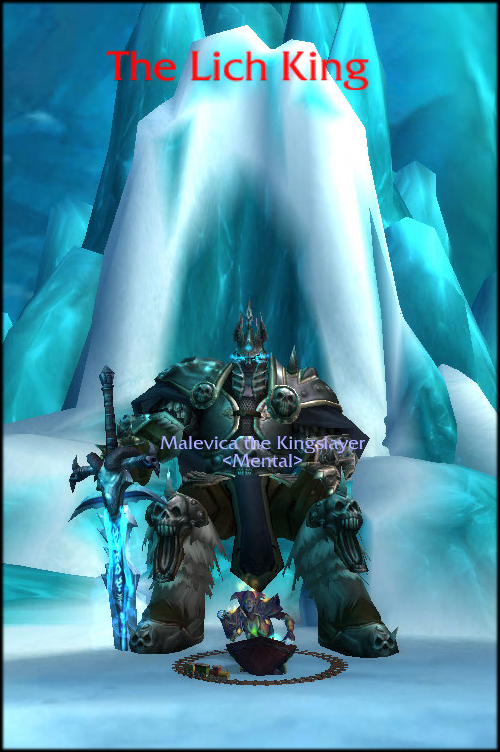
Last night my guild and I had the pleasure of valiantly coming to the aid of the Ruby Dragonflight and slaying the invading Halion and his Lieutenants. Well, my guild did that, I was stuck listening on Vent while reinstalling every patch since November 2008 (3.0.1 onwards) because the Blizzard repair tool got a bit overzealous, but I did get finished in time for the last half-dozen attempts and the kill.
I should point out that I’ve got a strategy here on this very site, updated with info from last night. That’s where the bulk of the information on the fight is, while this will just be some extra thoughts, tips and healer-centric comments.
Trash
I didn’t actually get to see the trash, but it was quietly pleasing to hear the “hmm, maybe we need to do something about those” after a very quick wipe on an early trash pull. Most of the pulls have tricks to them: some mobs have a stacking buff depending on proximity to others, for example, which means they need to be tanked apart.
I can’t offer many more details, except to warn anyone new to the encounter to pull carefully, separate big, scary-looking mobs, face everything away from the raid and CC whatever you can as a precaution. This is my default approach to new raids, which was, to my utmost disappointment, generally unnecessary even in Icecrown.
The Lieutenants
The biggest dangers posed by Baltharus are from the knockback and the stacking damage buff. Make sure you’ve cleared the space around him so no one can pull anything extra, and keep a close eye on Baltharus for his stack of Siphoned Might. A Brand on melee quickly gave him quite a large number of stacks and we lost a tank, so keep fingers on cooldowns.
The whirlwind got a mixed response, with some people claiming they didn’t notice it and others confirming that it exists and hurts. I’d suggest getting melee DPS to run out to begin with, and see what the damage is like on those people who’re slow (you know there’ll be some) to decide if it’s safe to let people stay in.
Saviana doesn’t need any special care from a healing perspective, since the things she does can be countered by the raid as a whole playing smart. You will need to watch her for the Enrage, which can be unpleasant if your hunters or rogues are slow to dispel it, and keep an eye on people who get Flame Beacon and will be conflagrated, since this hits pretty hard.
I’d suggest making sure healers are spread out, to avoid too many running away at once, as the only major organisational thing required.
Zarithrian is also not a terribly difficult encounter. Healers will need to be careful of their aggro when adds are spawning and tanks are controlling them. Priests with Fear Ward and Shaman with Tremor Totem should be working together to keep fear off the main tank, and preferably themselves as well.
The tanks in our 25-man were swapping at 3-4 stacks (once their debuff had faded), and the damage at low stacks is very weak, just don’t get lulled into a false sense of security, and be aware that it will change.
Halion
Ah, the bit I do know about first-hand.
Beforehand
The first question is probably how many healers to take. We used 7 for 25-man normal, although it could easily have been done with fewer. For 10-man it could probably be covered by two decent healers, but a third will add some wriggle room, especially in Phase 3. On heroic the healing load is significantly higher, so 7 on 25-man and 3 on 10-man would be necessary, I think. You could argue for taking a 4th healer for 10-man heroic, but usually this means your raid is taking too much hurt, not that you don’t have enough healers, so my advice would be to address that first.
Before pulling, you need to have a plan for Phase 3, and for dispelling. You will need to split your healers in Phase 3, so those people need to know who they are. One strong MT healer should be in each group, and the Twilight Realm group would benefit from a Resto Druid because of the aura, but the exact split isn’t as important as making sure it’s relatively even. Every healing class can dispel the Mark of Combustion/Consumption debuffs (Priests and Paladins can do magic, Druids and Shaman can do curses) so this shouldn’t be a problem.
Whether or not you assign someone to dispel the Marks or just leave it as free-for-all is a decision for your raid group to come to for itself. The benefit of a dedicated dispeller is that you don’t have multiple healers running around trying to cleanse people at the same time, but leaving it free-for-all can mitigate the impact of someone running out too far from the named dispeller. If you do assign a dispeller, give them a raid icon (and a macro to reapply it, DBM gets a bit mark-happy) so people know not to run to the opposite side.
If you’re planning on heavy use of Body and Soul, that priest would probably also be well-placed to dispel, which might simplify things.
Phase 1 and the Pull
First things first, know where your tank is pulling from and where he’s going to face the boss. If he’s inconsistent, nag him until he picks a position and sticks to it. The reason for this is that Halion cleaves and stuns with his tail, so you need to know where he’s going to be so you can get in and start healing right away.
Phase 1 is really just a bit of a warm-up. Don’t get over-excited and twitch-dispel the unusual debuff that’s just popped up on your rogue (not that I put a flame patch under the melee by accident, of course not… /nonchalant) and keep an eye on where the Meteor is going to hit (melee can find it tricky to see the rune on the ground, especially under things like Consecration) and life should be fairly straightforward.
Phase 2
When he gets to 75%, move to the portal but don’t click it until you can see that the tank for Phase 2 has already gone. This applies to everyone, not just healers. We lost way too many people who went down immediately and found they had aggro, or that the tank hadn’t had time to turn Halion away.
Because of the aggro-drops when taking portals, and the delays caused by zoning between Realms, we left a tank and healer in the Physical Realm twiddling their thumbs so that the tank was ready to pick Halion up immediately when Phase 3 began. It’s not a fun job, but it is useful.
The Twilight Realm is more interesting. The AoE damage aura, Dusk Shroud feels roughly equivalent to normal Sindragosa: the average tick was a shade over 2k, which isn’t really enough to stress people out, although I suspect it will be much more of a factor on heroic.
The other big thing from a healing perspective is the requirement to heal on the run when Twilight Cutter is active. On normal mode it’s not too difficult to avoid this if you watch for the emote and then run to a position just behind where the beam will turn up (you have 5 seconds to move, and as of today DBM will show a cast timer for this to help out), and if you’re lucky you might not need to move again since the beam only sweeps out about 90 degrees.
Remember to account for latency when you move though: the beam may not be exactly where you think it is if you have high-ish latency, and the damage extends a yard or so either side of the actual animation, so give it a bit of respect, like you did for Yogg-Saron’s clouds.
The biggest problems we had in here from a healing perspective tended to be tank deaths due to healers moving or being dead. There’s not much we can do about Cutter deaths (although a bubble might make the difference if someone clips the edge of the beam, since it’s a number of very quick hits, not one big hit), people just need to learn to look up at the world and dodge.
You’ll probably blow Bloodlust/Heroism at the beginning of this phase.
Phase 3
I was mostly in the Twilight Realm for this week, so I can’t tell you too much about life upstairs. Really though you have all the information you need since nothing has really changed from Phase 1/2, although since there will be fewer healers in each Realm every healer should be watching out for the tank in case the “tank healer” has to move at the wrong moment.
The other adaptation your raid can make to make your life easier, especially as a Physical Realm healer, is to stop DPS at the transition and let the Physical Realm DPS and healers get through the portal and into position. Otherwise it’s quite possible to push Halion to high Corporeality very quickly and make the tank take double damage before healers are ready. Count to 5, or 10, whatever works for your raid, then start DPS again.
A good general tip is to have someone watch the Corporeality counter and call for DPS pauses as appropriate to keep damage under control.
Overall
Really the point to emphasise is that this is a survival fight with high mobility and awareness requirements. You will need to be aware of the area around you, and be ready to move if necessary. You should also be able to change your healing rotation to keep healing on the move, especially for the Twilight Realm and even more especially on heroic.
Other info
Keeva at Tree Bark Jacket posted a couple of PowerAuras exports for the debuffs you need to run away with. You can modify them to suit your needs, but they’re a good quick starting point.
PlusHeal also has an entire forum dedicated to this, albeit with only two posts at the moment.
Derevka at Tales of a Priest has a guide to heroic 10-man from a healer’s perspective, which is highly recommended reading.







